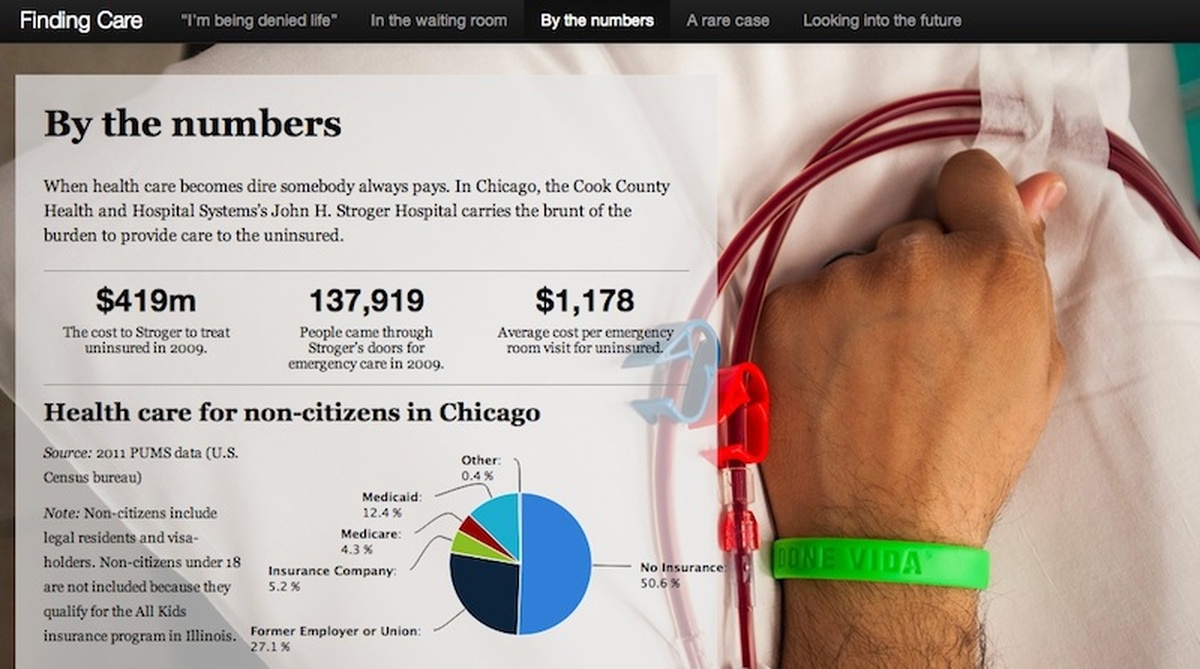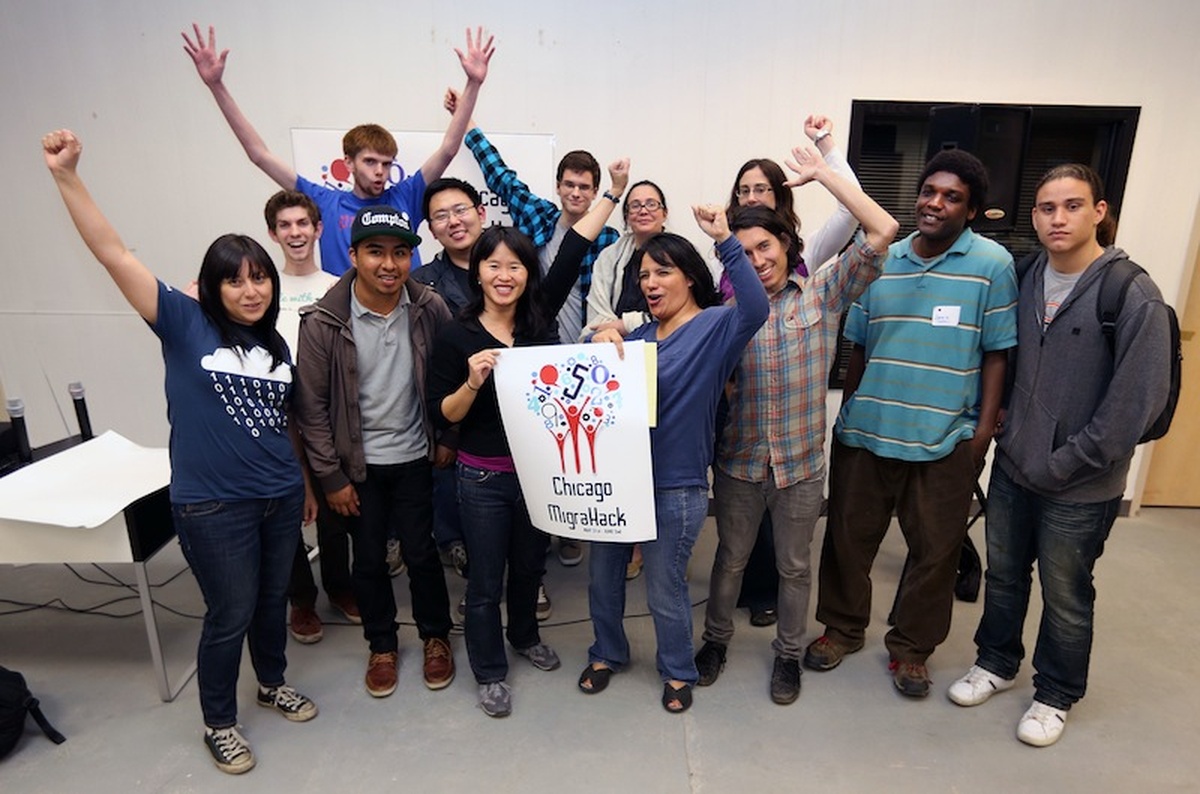Features:
How We Made Finding Care
The grand prize winners of Chicago MigraHack on their entry

From Finding Care
The Chicago MigraHack, held earlier this month, focused on the use of technology and open data to produce innovative apps and information tools on immigration and related topics. Nine teams participated, and we spoke with two members of the team that produced Finding Care, winner of the prize for best storytelling with data visualization.
Centering on a story of one Chicago man who needed a kidney transplant to survive, Finding Care is a narrative-centered multimedia feature. The Chicago Reporter’s Maria Ines Zamudio called the project “a marriage of ideas and expertise,” and explained that her team’s starting point was to begin with a complex issue—in this case, the unavailability of healthcare to undocumented immigrants—and then “find a story and a way to visualize it.” Zamudio and TribApps developer David Eads offered their perspectives on how they went about it.
Assembling the Story
Maria Ines Zamudio: David Eads, a developer, and I, a journalist, had talked about what would be the perfect project to work on over the weekend for Migra Hack, a hackathon using immigration data. But it wasn’t until the rest of our team joined us that we took on the challenge of visualizing the story of millions of undocumented people who will not qualify for health coverage under the Affordable Care Act.
The idea was to show in a simple way the extent of the problem. How many people locally wouldn’t qualify for insurance? And what options do these immigrants have for treatment when they get sick? This part of the project is very similar to what I typically do when I’m working on a story, but the second part was new and exciting. But it was that part of the project that I strongly believe is desperately needed in many newsrooms, including my own.

The team at work (Aurelia Ventura, Chicago MigraHack)
David and Wilberto Morales, a database editor at Hoy Newspaper, worked together to build a platform to showcase the story. David built our project, Finding Care, using Tarbell. This is a platform for building online stories using Google Spreadsheets, where the data is used to build the project. While the developers worked on building the web site for the project, photojournalist Lucio Villa edited audio and photos.
Reporter Yana Kunichoff and I wrote the story and pulled the rest of the missing data with additional help from Lucio. We pulled data from PUMs data because it is the most detailed census data available. Trying to find demographic data about undocumented immigrants is difficult. The data available is only an estimate. We wanted to make sure we were able to find the closest data available. We pulled data on non-citizens living in Chicago and insurance coverage. We also did some more reporting to find the cost of going to the emergency room or the cost of treating uninsured patients in Cook County.
The end project combined, what I think, is the best in journalism—a good story, visuals, and a great presentation. Thankfully the judges saw the power of this story and gave our team, Los Almighty Windy City Data Hustlers, the top prize.
The Tech Behind It
David Eads: Finding Care was built using Tarbell, a platform for building online stories using Google Spreadsheets. We set up a worksheet for every slide that controlled the position and size of the text box on each slide and any other data we wanted associated with each slide.
CSS3 transitions are used for the grayscale-to-color effect (which only appears in Webkit based browsers like Chrome). A roughly 150-line JavaScript app manages the scrolling slide transitions and adds the audio player and chart. We use jPlayer for audio on the first slide and Highcharts to create a graph on the third slide.
Future versions of the site could better handle image full-screening and work better on smart phones, tablets held the tall way, and Internet Explorer. Want to make the project better? You can, because it’s open source.

The winning teams (Aurelia Ventura, Chicago Migrahack)
People
Organizations
Code
Credits
-
 David Eads
David Eads
David Eads is a news applications developer at ProPublica Illinois, where he combines journalism with software development. Ever since he built the website for his high school newspaper in 1996, Eads knew he wanted to work at the intersection of media and technology. He moved to Chicago for college in 1999, studying physics at North Park University. During school he helped found the Invisible Institute, where he also maintained a blog about Chicago public housing called The View From The Ground. He later helped create FreeGeek Chicago, a community-based computer recycling organization and the Supreme Chi-Town Coding Crew, a weekly workshop to teach data journalism. He’s also worked on visual journalism teams at the Chicago Tribune and, most recently, at NPR Visuals.
-
Maria Ines Zamudio
award-winning investigative journalist for @apmreports. Formerly @APNORC, @memphisnews, @ChicagoReporter @ire member, @latinousa contributor. Music lover.




 Advice for sharing security advice
Advice for sharing security advice